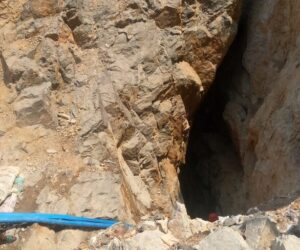Nigeria has recorded 166 deaths from Lassa fever in 2025, with the case fatality rate rising above that of the same period last year.
This was contained in the latest situation report released by the Nigeria Centre for Disease Control and Prevention (NCDC).
In its epidemiological week 37 report, the agency said the country had logged 7,673 suspected cases of the disease, of which 895 were confirmed and seven were classified as probable.
These cases were reported across 21 states and 106 local government areas (LGAs).
In the same reporting period in 2024, 8,251 suspected cases and 1,005 confirmed cases were recorded across 28 states and 128 LGAs, with 170 deaths.
Week 37 developments
During week 37, 146 suspected cases and 11 confirmed cases were reported, with two deaths recorded across seven LGAs in four states: Ondo, Bauchi, Kogi, and Anambra.
The number of new confirmed cases fell slightly from 13 the previous week. The week’s fatality rate was 18.2 per cent.
Cumulatively, by week 37 of 2025, the case fatality rate stands at 18.5 per cent, higher than the 16.9 per cent reported in the same period in 2024.
The data also showed that the predominant age group affected is between 21 and 30 years, with the range spanning from one to 96 years and a median age of 30. The male-to-female ratio among confirmed cases stands at 1 to 0.8.
Geographic spread
The burden of infection continues to be concentrated in a handful of states.
90 per cent of confirmed cases have been reported from just five states.
Ondo accounts for 33 per cent, Bauchi for 23 per cent, Edo for 18 per cent, Taraba for 13 per cent, and Ebonyi for three per cent. Sixteen other states share the remaining 10 per cent of confirmed infections.
Health workers and surveillance
The NCDC said no new health worker was infected in week 37, although 23 have been affected since the start of the year.
It reported that nine patients were managed at treatment centres during the week, bringing the cumulative number of managed cases in 2025 to 814.
The agency said contact tracing is also ongoing. Eight new contacts were listed during the week, raising the cumulative number to 3,498.
Of these, 44 are currently under follow-up, while 3,438 have completed follow-up.
No symptomatic or positive contacts were recorded in week 37, and there were no new losses to follow-up. Since the start of 2025, 15 symptomatic and 15 positive contacts have been identified, with 16 lost to follow-up.
Response activities
The NCDC said it continued to coordinate multi-partner response efforts across the country.
During the reporting week, Nigeria participated in the second ECOWAS Lassa fever conference in Côte d’Ivoire and concluded the second cohort of its Clinical Management Fellowship, which trained 19 fellows with support from Georgetown University, Irrua Specialist Teaching Hospital, the Federal Medical Centre Owo and other partners.
The centre also reported ongoing clinical research, including the INTEGRATE trial in Ondo State, while Lagos distributed thermometers to contacts for monitoring.
After Action Reviews were conducted in Edo, Ondo and Ebonyi States, clinicians in six high-burden LGAs in Ondo were sensitised with support from the World Health Organisation (WHO).
Risk communication and prevention campaigns were scaled up, with the launch of an IPC e-learning platform, dissemination of updated guidelines, and distribution of supplies such as ribavirin, protective equipment and sanitation materials.
10 rapid response teams were deployed to affected states, while healthcare workers received additional training in Bauchi, Ebonyi and Benue.
Other activities included environmental response campaigns, community engagement workshops in Cross River, and media sensitisation in Ondo State.
The NCDC also participated in regional and international collaborations, including a training programme in Togo and the ENABLE 1.5 trial, which conducted follow-up and blood sampling in Edo, Ondo and Ebonyi States.
Challenges and recommendations
Despite the progress, the NCDC identified some challenges affecting outbreak control.
These include the late presentation of cases to health facilities, which contributes to the high fatality rate, poor health-seeking behaviour linked to the cost of treatment, poor environmental sanitation, and low levels of awareness in high-burden communities.
READ ALSO: Remi Tinubu launches menstrual hygiene intervention for schoolgirls nationwide
The agency recommended that states strengthen community engagement and prevention efforts year-round, while healthcare workers should maintain a high index of suspicion and ensure timely referral and treatment of suspected cases.
It added that stronger collaboration with partners is needed to build state-level capacity to quickly prevent, detect, and respond to outbreaks.
Lassa fever
Lassa fever is an acute viral haemorrhagic illness caused by the Lassa virus, which is transmitted to humans primarily through contact with food or household items contaminated by the urine or faeces of infected rats.
It can also spread from person to person through contact with bodily fluids.
The disease often begins with fever, weakness, and headache, and may progress to more severe symptoms such as bleeding, difficulty breathing, swelling, and organ failure.
Early diagnosis and prompt treatment with Ribavirin are critical for improving survival.










